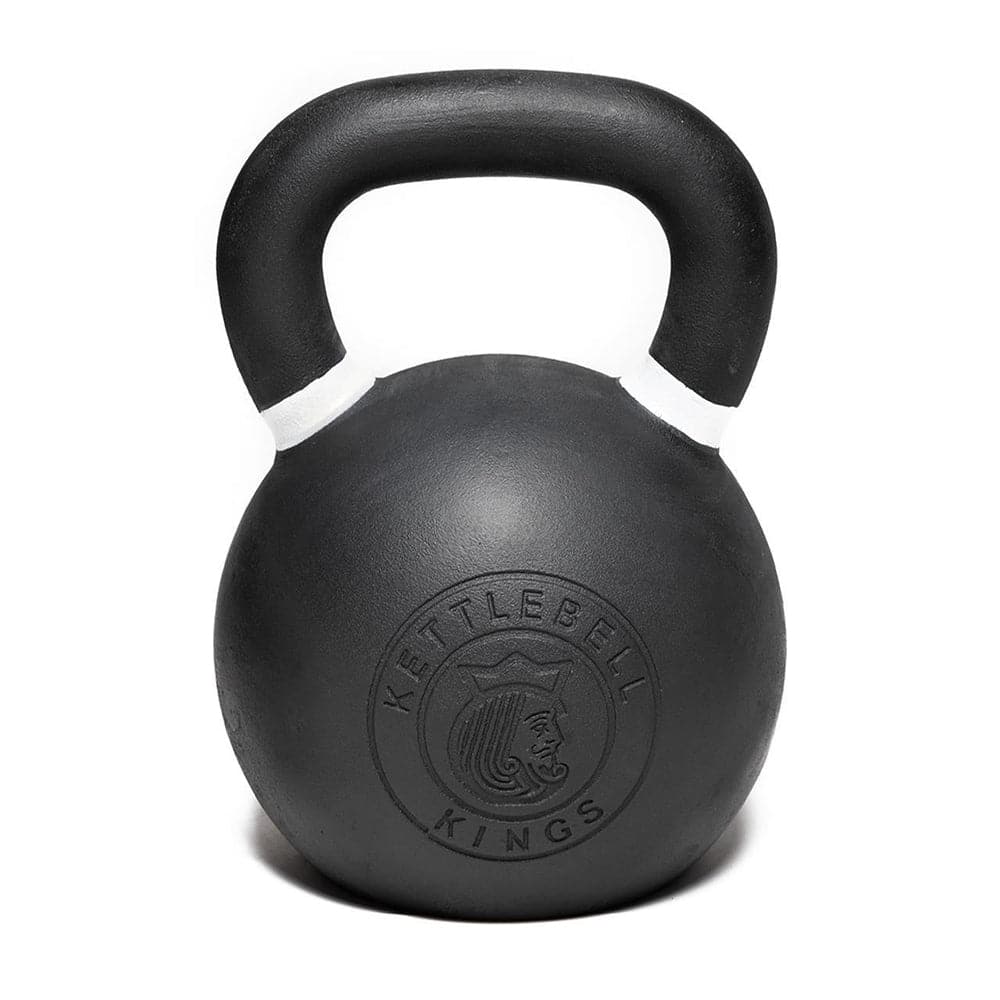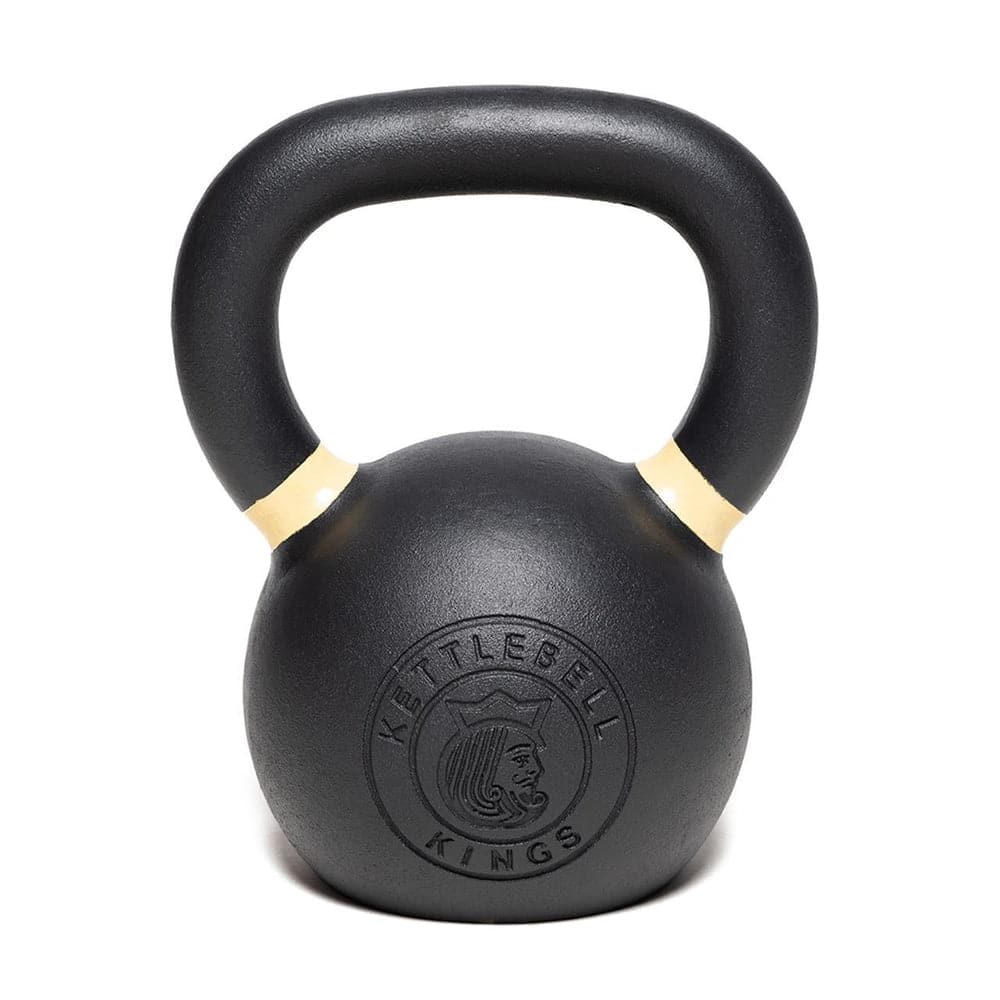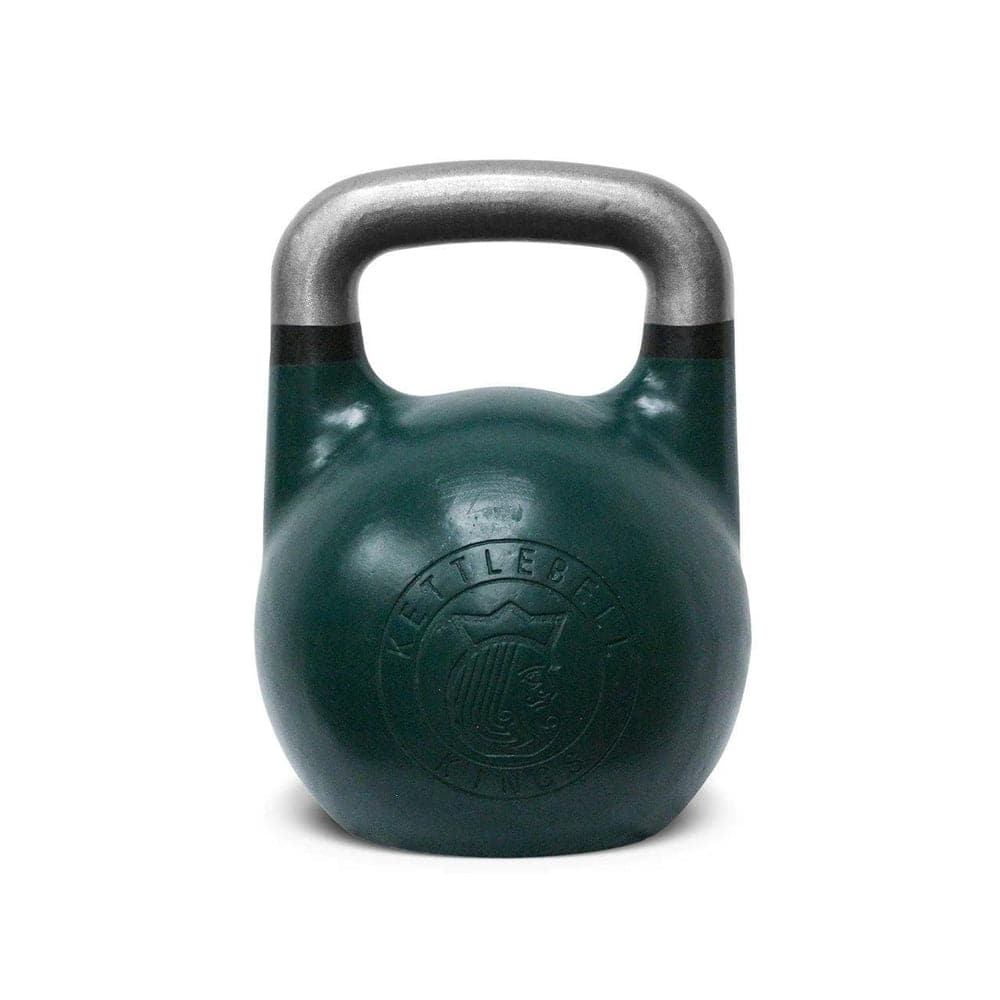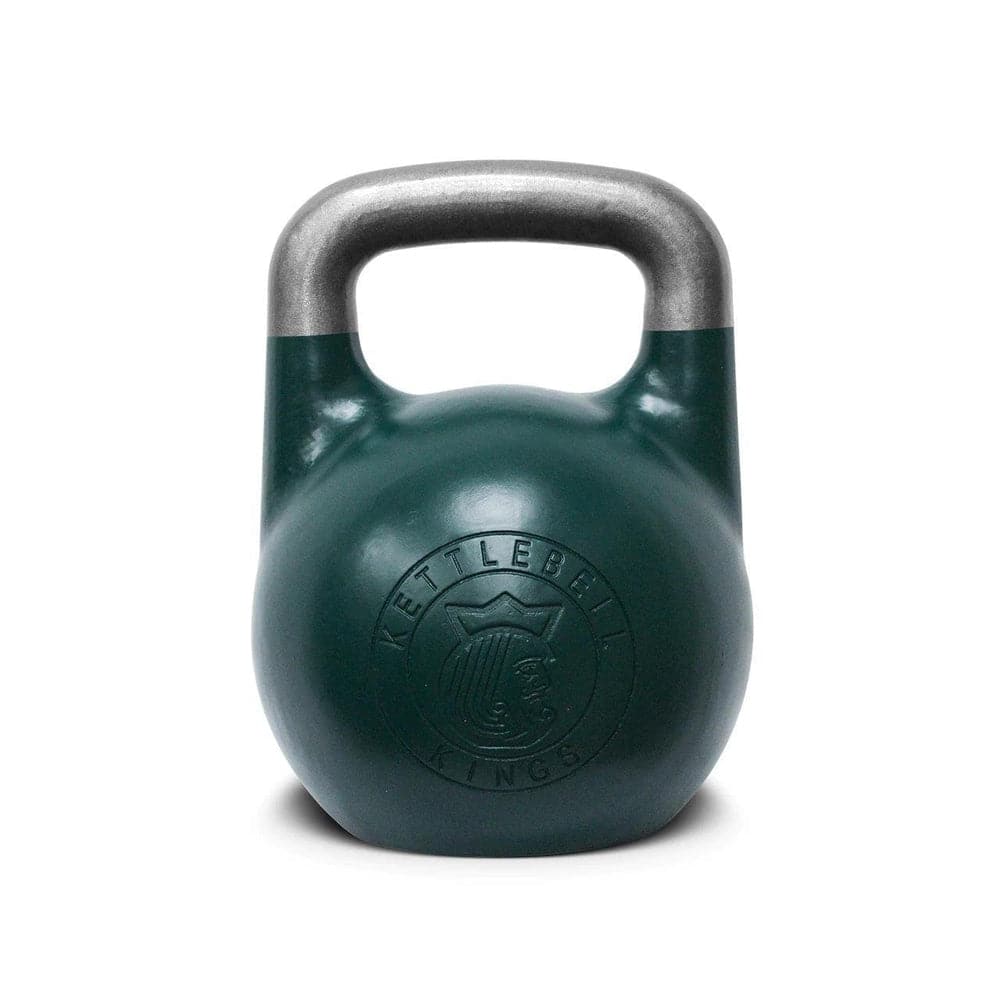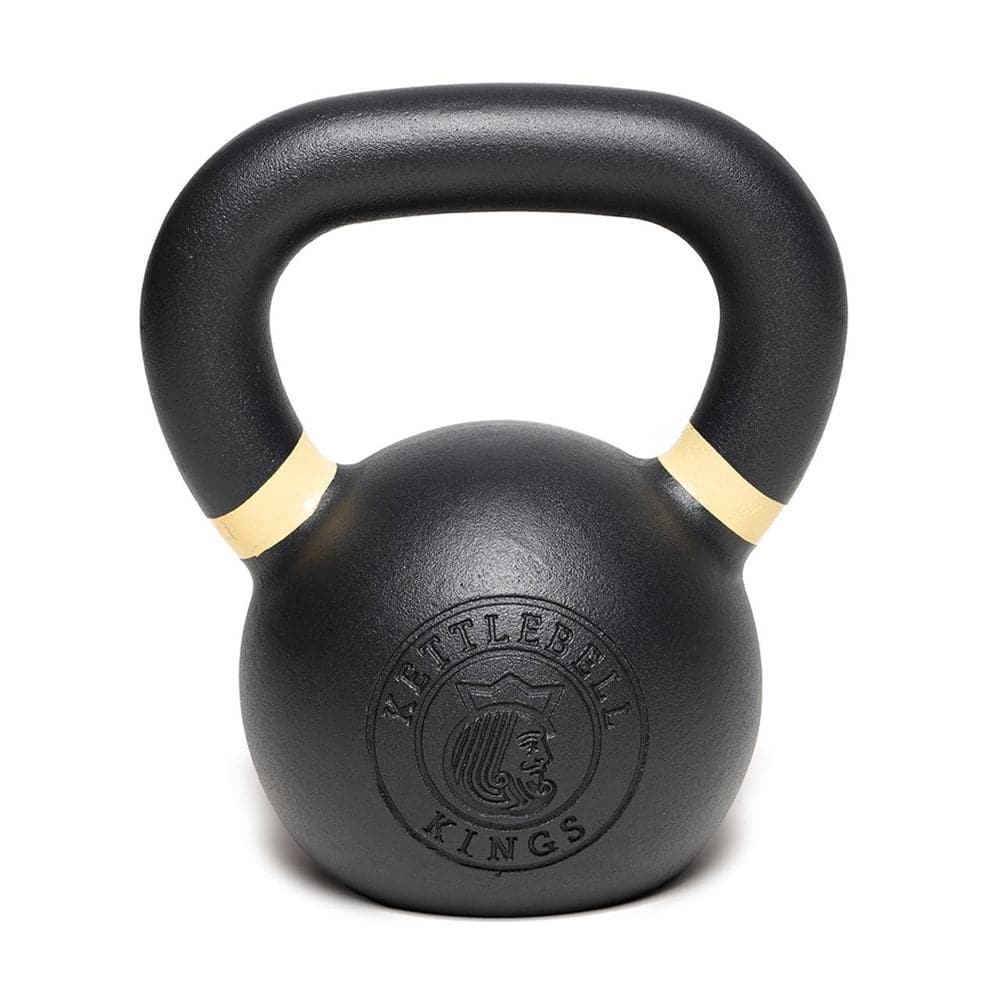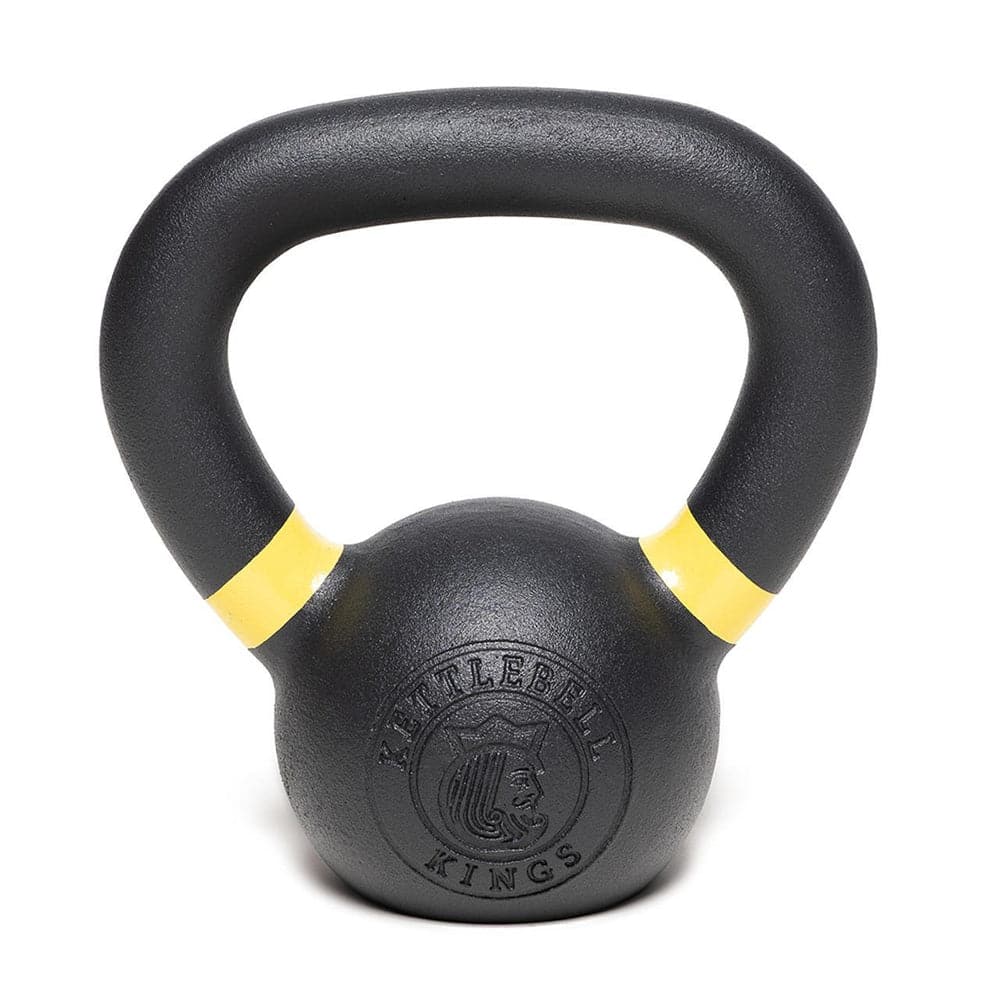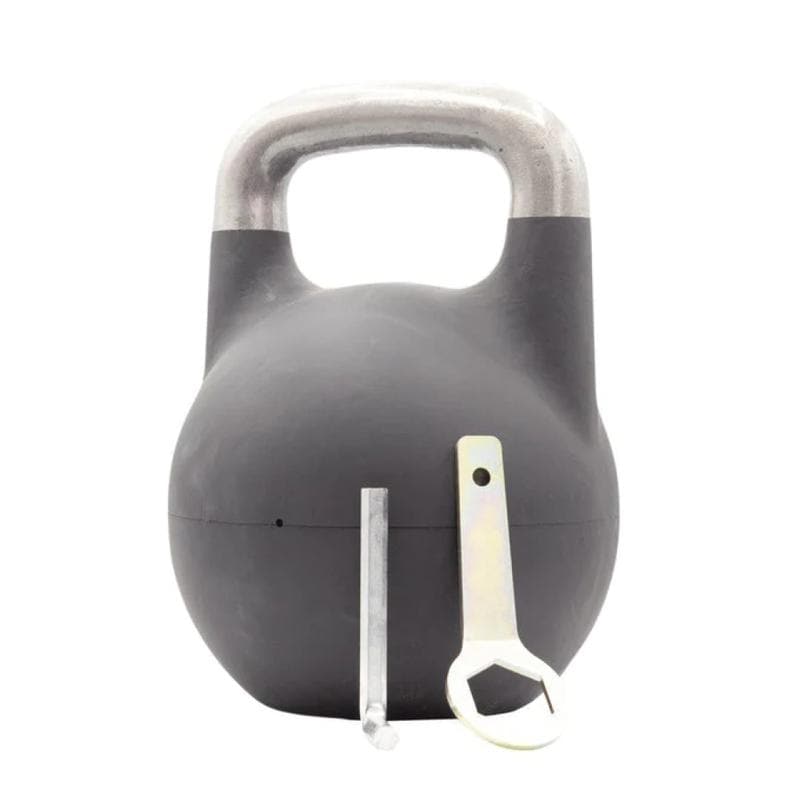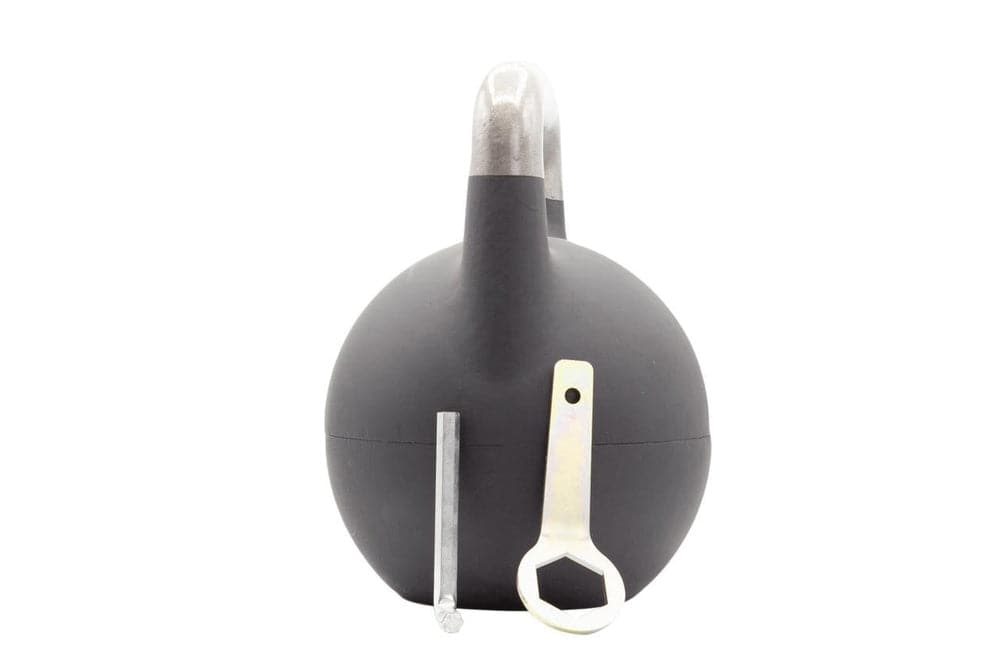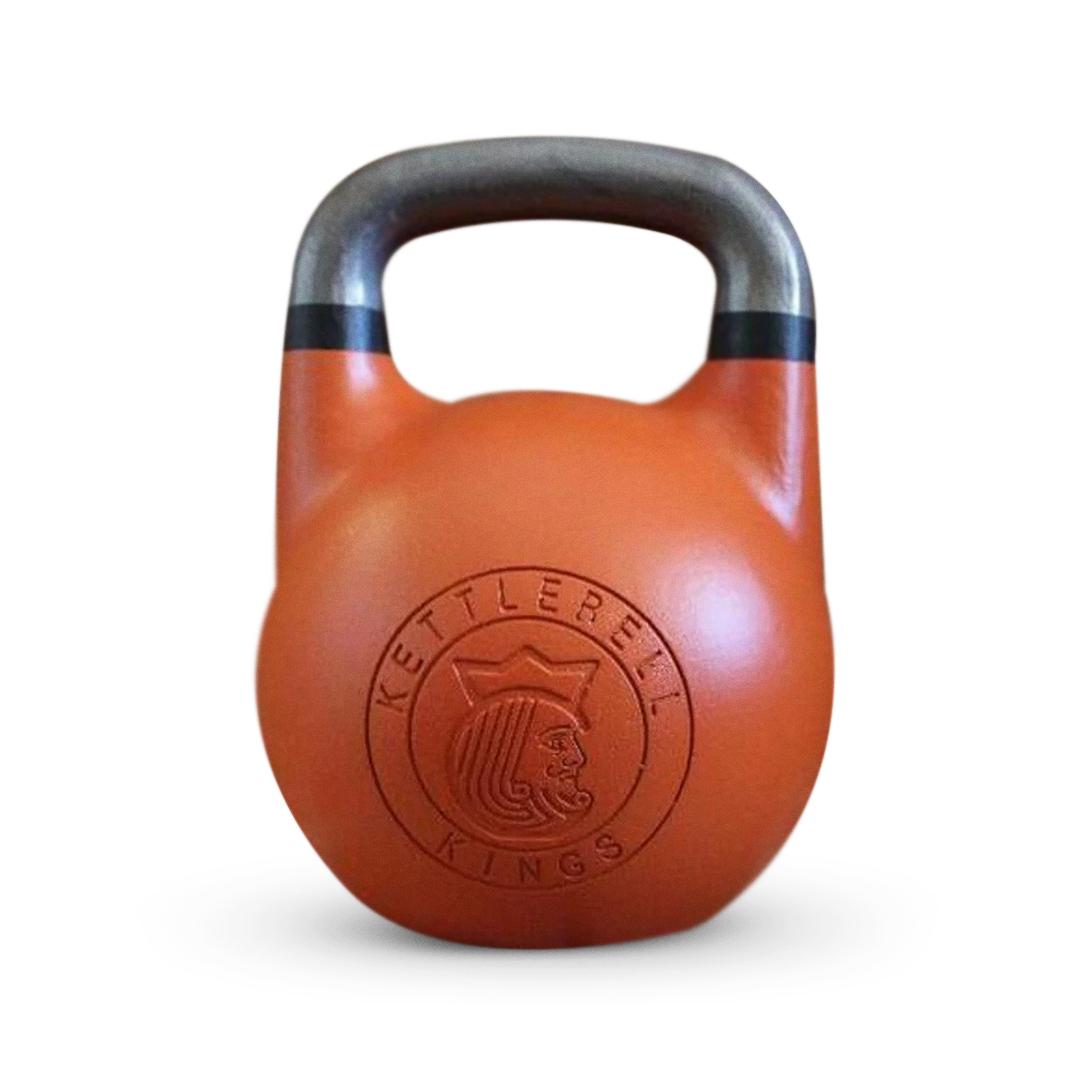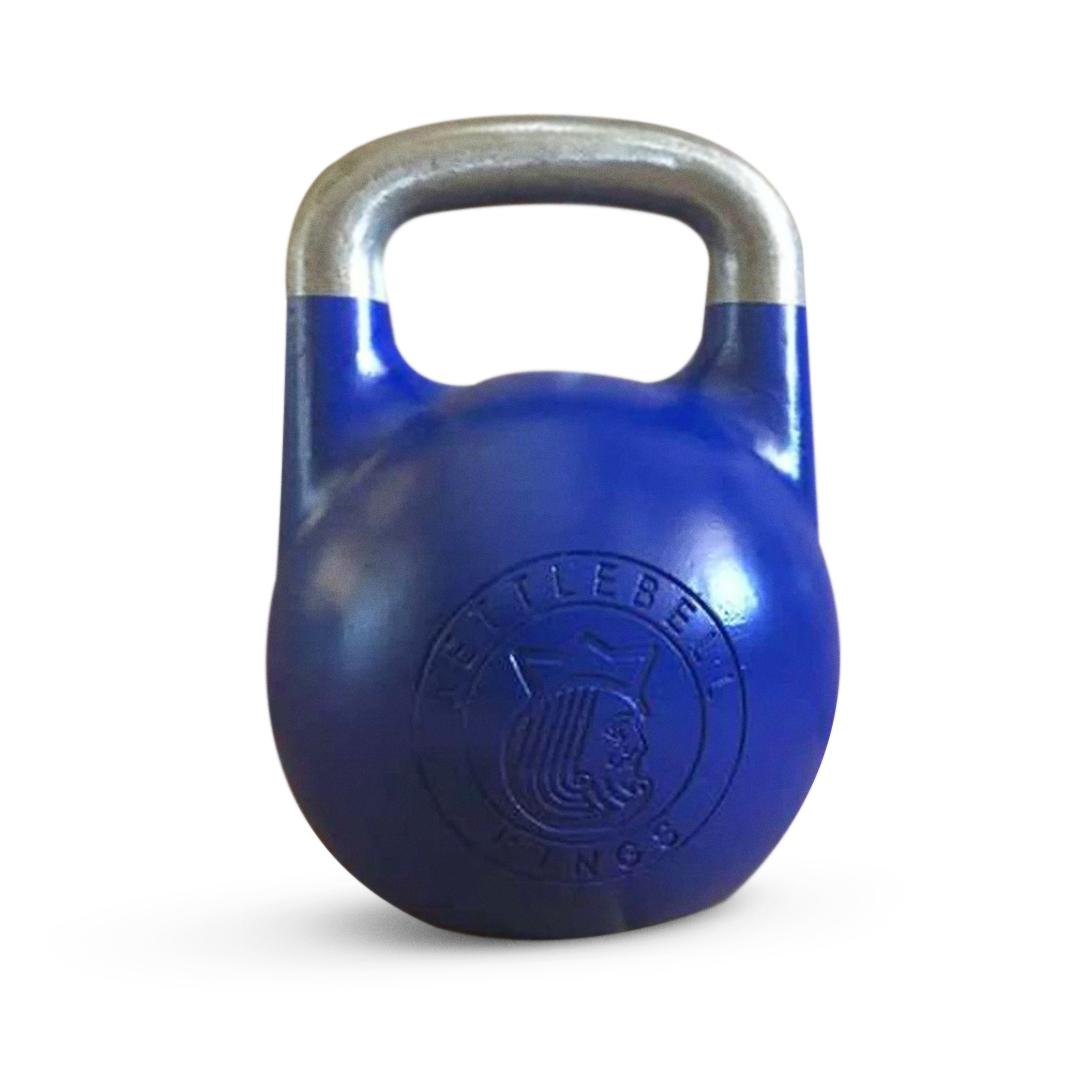Unfortunately, Clint Eastwood never made a movie called, The Good, The Great and The Awesome. There’s quite enough negativity in the real world without my highlighting the bad and ugly points about something we all love. The good points are the ones that will make kettlebells continue to grow in popularity. The bad points are the limitations and restrictions that give kettlebell training a bad rep and/or prevent accelerated growth. The ugly points are the cringe-worthy and very common sights I see across the galaxy.
Eternal Youth
We’re born in the fetal position. We spend most of our lives battling the fetal position and we eventually die in it (probably). The glutes and lats are the two largest muscles in the body for good reason—they bring us out of the fetal position. The more we can avoid the fetal position, the further we are away from our grave. A well-executed Hardstyle swing trains both the glutes and lats very well.
Golden Exercises
Exercises that provide the most bang for your buck. They have the highest crossover effect to other activities, and if you did just these and nothing else, forever, you’d pretty much be able to handle anything that life threw at you. Call me biased, but I think there are more golden exercises associated with kettlebell training than with any other piece of equipment. The golden exercises of kettlebell training include: bent press, swing, get-up, goblet squat, windmill, half-kneeling bottoms-up press, snatch, offset rack walk, overhead carry, suitcase carry and farmer’s carry.

Multiplanar Versatility
The fact that a kettlebell can be swung through two planes of motion during one repetition develops applicability to real life challenges and activities. The highly dynamic and ballistic nature of many of the exercises exclusive to kettlebell lifting makes power development highly accessible and safe for normal, everyday people.
Kettlebell Complexes
Many of the most effective kettlebell programs involve at least two exercises being carried out within the same set. A great deal of work can be achieved in a very short period of time with kettlebell complexes and visible results come very quickly for consistent swingers. Here are two examples of killer kettlebell complexes:
Set timer to bleep every 3min 30sec, 8 times. Go on the bleep:
- 5 Offset swings
- 1 Offset clean
- 3-5 Offset military presses
- 5 Offset squats
- 5 Pull-Ups
Set timer to bleep every 90 seconds, 10 times. Go on the bleep:
- 5 Offset swings
- 5 Offset cleans
- 3-5 Offset squats
- Add load when 5 squats can be achieved in every set.

Offset Loads
I wrote an entire blog about why training with offset loads helps you reach almost all goals faster than training with an even balanced load. Of course, you can offset a barbell by adding more plates on one end or you can use an offset pair of dumbbells. But offset work is much more fluid and accessible with kettlebells.
What-The-Hell Effect
When kettlebell exercises are put together to form complexes and chains, a great deal of full body work in many movement patterns can be performed. The speed at which people notice changes in their body leads to something known as the what-the-hell effect.
Accessibility
I love having a vast collection of training toys, but how much do we really need? (I hope my wife doesn’t read this.) With a little creativity, a single kettlebell and some floor space does the trick. Here’s one of the workouts that I’ve probably done most often over the past decade:
Set timer to bleep every 3 minutes, 10 times. Go on the bleep:
10/10 Swings
3 Goblet Squats
15-20 Push-Ups
Jump rope until the next bleep
Looking for top-notch kettlebells to enhance your workouts? Explore our high-quality Powder Coat Kettlebells, meticulously designed to elevate your training experience.
The Bad
Requirement for Proper Instruction
Nowadays, I program for more people remotely than I do for face-to-face clients. When I’m selecting suitable exercises for people who will be training on their own, it’s very helpful to have a pool of self-correcting exercises available. All exercises can be scored 1-10 on a scale of self-correctability. If an exercise has a score of one, it means every rep will bring an untrained person further away from good form. Remember that adding load to poor movement just strengthens poor movement. If an exercise has a score of ten, every rep will bring an untrained person closer to good form and they’ll eventually find pretty good technique with minimal coaching.
Unfortunately, most kettlebell exercises score quite low on this scale, therefore require considerable technical coaching to ensure that every rep isn’t doing more harm than good. There are some great high scorers however, which include: half-kneeling bottoms-up press, goblet squat, bottoms-up open half-kneeling windmill, bottoms-up rack walk, farmer’s carry and suitcase carry.

Group Classes
A key element to building a successful group training class is keeping it accessible for a newbie with no skill or experience so that he/she can step into any class and enjoy the experience. I didn’t realize this concept for the first few years of leading my own kettlebell class in London. My regulars reached such a high level of skill that the class became completely inaccessible for most new starters. This led to my having to spend one-on-one time with newbies at massively discounted rates to develop a basic level of skill. Some newbies also felt intimidated by this enrollment process and my numbers were always limited.
The bad point of group kettlebell classes is that they must remain super simple with a minimal exercise library. This is especially important if the goal is building a bigger class and ultimately being able to bring on another instructor.
Having a super simple session plan and sticking to it indefinitely may not sound great to you or some clients, but look at Bikram yoga. A large portion of your target market likes the predictability of the same routine. Maybe this is because their personal and/or work lives are so unpredictable. Resist your ingrained desire to educate the regulars and pass on new techniques that you’re excited about. Instead, use your creativity to design a kick-ass repeatable class-plan that includes progressions and regressions suitable for all new-starters but challenging enough for the intermediates. Use the ingredients of swings, crawling and any of the high-scoring exercises listed in the previous point and you have an unlimited choice of workout options.

Untrained Coaches
Just because a coach has a master’s degree in kinesiology, a personal trainer certification and ten years’ experience at competitive track and field, it doesn’t mean they know the first thing about using (let alone teaching) kettlebells. Testosterone and overconfidence are rife in the personal training and coaching industry, which when mixed with a lack of knowledge is a dangerous combo. Any kettlebell teacher must know how to coach a good unloaded hinge, squat and breathing pattern before adding a kettlebell to the mix. They should also be proficient in coaching intra-abdominal pressure generation with the use of breathing and deep core techniques. It goes without saying that they should also have a quality kettlebell instructor certification under their belt.
I would recommend a family member wanting to learn kettlebells to seek out anyone with an SFG or RKC certification. I’ve been on a lot of really good kettlebell courses (and bad ones) and there are some amazing world class teachers out there. Unfortunately, none I know of (including those in the GS world) have technique testing standards to the same degree as StrongFirst and RKC. Therefore, although someone might have a certification from a world-renowned kettlebell guru (who might be a great teacher), it doesn’t necessarily mean their technique or understanding of the progressions is any good—it just means they turned up for the certification.
Rumor has it that seven times Master of Sport GS ninja champion, Brittany Van Schravendijk is putting together a GS certification with Kettlebell Kings. Watch this space.

Photo credit: Claire Davies
“Kettlebells Hurt My Back”
If I had a dollar for every time I heard this, I might be able to afford a fancy cerakote kettlebell. When untrained chair-shaped humans swing heavy metal objects in two planes of motion, injury usually occurs. The point of all resistance training is to strengthen movement. I would attribute all injuries in a non-sporting, non-competitive environment (i.e. all other training situations) to a lack of understanding or appreciation of establishing movement before adding speed, load or explosive speed. Kettlebells don’t hurt your back—the way you bend over does. A good movement and kettlebell coach can help you.
Chrome Handles
I’m all for training grip strength but if one of those slippery things flies out of your sweaty hand you could be in for a torn finger tendon (seen it happen).
Jefferson Curls
These can be very useful for the top 1% of athletes who possess an existing elite level of body awareness, proprioception and mobility. For average, everyday athletes who live in chairs, they’re completely unsuitable and if performed for reps, they’re downright dangerous. Unless you own the ability to create space between your lumbar vertebrae as you fold, don’t even go there. The potential risk massively outweighs the relatively small benefit. There’s a plethora of other ways to open up the soft tissue of your lower back by just using the floor.

This danger warning is particularly relevant to those with a posteriorly tilted pelvis, which is approximately 60% of the American population. Posterior tilters already start everyday hinge movements by flexing the lumbar vertebrae first. We don’t want to train their brains to be even more comfortable in lumbar flexion. For the sake of long-term success instead of short-term calisthenics goals, let’s spend that time repatterning the hinge.
The Ugly
Overhead Swings
The Hardstyle swing accelerates both ways, which differs from any “Russian” swing I’ve seen.
Swinging a kettlebell overhead makes gravity do the role of the lats and cheats them out of a job during the backswing. The kettlebell swing is a hip-hinge exercise that the shoulders play no part in. When people use their shoulders to swing overhead, it takes away from their ability to produce force with their hip hinge. You can swing almost double the load when swinging to hip/chest height versus swinging overhead creating a better training response for the hip hinge.
I’m all for working joints through their full range of motion, but not at the cost of making a high-value exercise considerably less effective. I’ve barely seen anyone able to carry out an overhead swing without overextending their lower back. Patterning such a weak movement for so many reps leads to long-term weakness and injury. If the goal is working the shoulder through its full range of motion during a hip hinge pattern, we have the snatch.

Training Hardstyle swings increases overhead swing ability and makes you stronger at deadlifts (up to about double bodyweight) making them a higher value exercise. Training overhead swings makes you worse at Hardstyle swings and does nothing for deadlifts. Therefore, if the goal is athletic development overhead swings are a complete waste of time. Of course, if you enjoy overhead swings and can perform them without overextending the lower back, then crack on. There are far worse hobbies to spend your time doing.
Extended Wrists
Extended wrists are a classic indicator of both untrained newbies and of coaches or athletes who have extensive barbell experience then jumped into kettlebells without any training or understanding.

An extended wrist sends a signal to the shoulder to move away from the midline, making a press or any overhead activity less stable (weaker). Fully inserting the hand allows the handle to sit on a nerve cluster that facilitates more triceps innervation, just as it would if you fell over and put your hands down to break your fall.
A crushing grip activates the shoulder stabilizers and allows for a stronger lift. A neutral wrist facilitates a crushing grip. An extended wrist, where the load sits on the palm, almost negates the ability to crush the handle and decreases the ability to produce force.
Extended Necks
There’s a continuous line of myofascia that goes from the soles of the feet to the eyebrows via the back of the body (Tom Myers’ superficial back line, Anatomy Trains). Also consider that 40% of power production comes from fascia, not muscle contractions (Carla Stecco’s Functional Atlas of Human Fascial System). Therefore, for the sake of developing a powerful hip hinge (swings and deadlifts), it is most optimal to maintain a neutral cervical spine throughout the entire swing movement. View the superficial back line as one long elastic band. By lengthening the elastic band in other areas but shortening it at one end you’re compromising the full elastic potential. By looking forward (extending the cervical spine) at the bottom of the swing, you’re cheating yourself out of potential power. A neutral cervical spine with the deep neck flexors engaged also facilitates a stronger neurological innervation to the abdominals and glutes.

Most new students don’t know how to maintain a neutral cervical spine during a hinge pattern while swinging a heavy iron ball. When new students focus on keeping their neck neutral, many nod the head forward or point the chin out. This sends his/her thoracic or lumbar spine into flexion. I suggest that new students be given a visual focus point to look at when they’re at the bottom of their swing. Place an object approximately five meters (roughly 16 ft.) in front of the student. Cue them to look to the horizon at the top of the swing and look at the object out of the top of their eyeballs when they’re at the bottom of the swing. This promotes slight cervical extension, but it generally helps prevent the rest of their spine from flexing.

After a new student has a few thousand swings under his/her belt and a strong hinge pattern has been established, it is then appropriate to switch to a neutral cervical spine position for more power.
Gloves and Wrist Pads
I encourage experienced swingers to regularly wear cotton gloves. They reduce friction and help develop a vice-like hook grip, necessary for heavy snatches. However, if the reason for wearing gloves is to prevent the skin on your hands from blistering, stop it. The gloves are dulling your proprioception and preventing you from learning good technique. I’m no advocate of the dumb saying, “no pain, no gain,” but I think that discomfort is an important factor that’s missing from the modern human’s life.
Wrist pads increase the diameter of your wrist and change your insertion technique for the worse. I get that some people experience great bone pain when they’re learning to clean but sometimes that just comes with the turf of kettlebell training. There’s a pain-free rack position with a neutral wrist for everyone. You just need some patience and mental fortitude to find yours. Besides, your bones will harden, your soft-tissue will strengthen, your nervous system will realize there’s no threat and bone pain will go away.
That’s all, folks! Happy swinging.
Phil McDougall
@phil.mcdougall
Ready to take your kettlebell training to the next level? Discover our premium Competition Kettlebells, crafted to meet the highest standards of performance and durability.
Kettlebell Kings has the most highly & frequently reviewed kettlebells in the world. We have free shipping in the US & Canada (www.kettlebellkings.com), Europe (www.kettlebellkings.eu) and Australia (www.kettlebellkings.com.au). Check out our 4,000 reviews for quality and customer service here!








